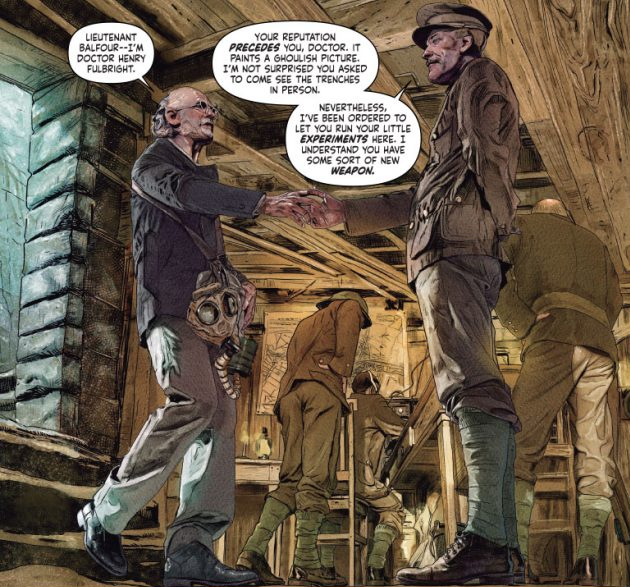I’ve always thought of Harbinger as Valiant’s answer to X-Men, which is, admittedly, a fairly obvious comparison to draw. Harbinger Wars 2 #1, however, was actually a really nice reminder that this franchise’s significantly more under-the-radar status allows it a degree of agility the now-hulking X-Men behemoth no longer has, and it uses that degree expertly in this issue to play upon current societal woes and concerns. Essentially, the first part of this summer’s Harbinger Wars 2 event is a poignant and engaging story, involving nearly all of Valiant’s best characters (where’s the Eternal Warrior at these days, btw?).
As it should. The Harbinger concept to me is the center of Valiant’s universe (or was until Divinity showed up, anyway), and this event is poised to treat it as such. It’s yet another tale of superheros turning against each, and as common as that has become these days, doing it convincingly is still tricky business. Without giving anything away, I’ll say this book handles it better than most in recent memory, rich as it with solid and believable motivations for the involved heroes to take their respective sides. The action of the shadowy government types here are a little harder to fathom, as they almost always are, but I digress.
But let’s keep it abstract, seeing as this is an advanced review (this book drops May 30) and I don’t go in for spoilers. Let’s get away from details and talk about the commentary. In a sense, the themes in Matt Kindt’s script are nothing we haven’t seen done or attempted by X-Men several times over the years: an outcast population, children on the run because of who they are, a government acting out of fear, a debate over what constitutes proper methods of resistance.
Kindt, however, is an incredibly nuanced writer who doesn’t need to hit us over the end with any of that to make this story compelling. He puts all those questions and themes in here seemingly as a mechanism for understanding the reasons our characters have for fighting, then he gives them all plans that start to pull them together. Each page pulls our opposed characters closer, revealing more about their motivations as it does so and setting the stage for a massive rumble to come.
There’s a cinematic quality to this story, in both its structure and scope, as well as in the way characters from various Valiant franchises are introduced, presented in big splashy panels as if they were leaving room for an applause break. Tomas Giorello hits the artwork here out of the park, as he has during previous collaborations with Kindt in Valiant’s best ongoing right now, XO Manowar.
Overall: Come for the incredibly tense and entertaining story, stay for the subtle commentary on our times—exactly as a book about outcasts persecuted by vast governmental power structures should be. This issue is all rising action, bringing in power players and stopping just short of slamming together. I can’t wait for No. 2. 9.3/10
Zack Quaintance is a journalist who also writes fiction and makes comics. Find him on Twitter at @zackquaintance. He lives in Sacramento, California.



